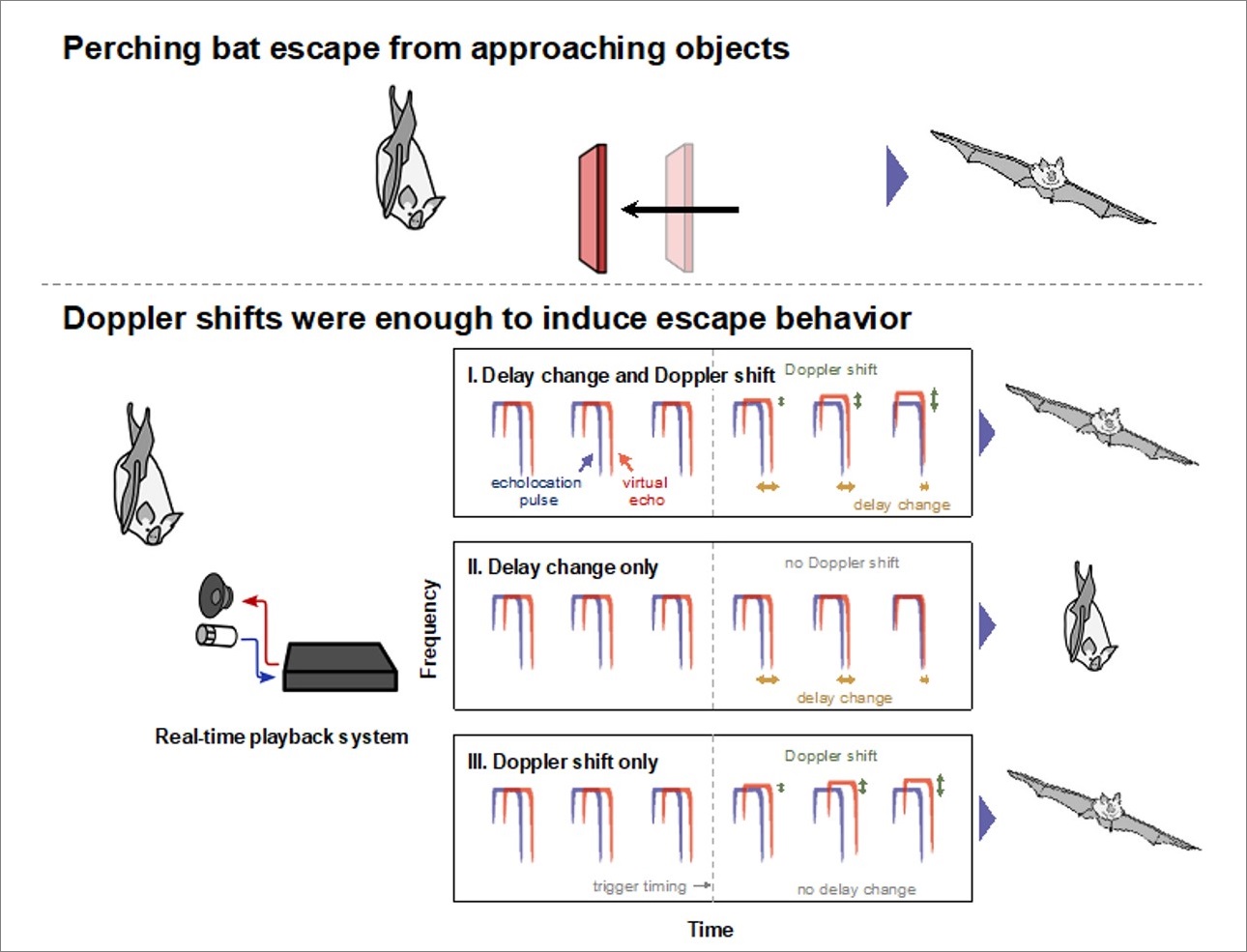Spotlights
[Research News] Nature’s Sonar: Scientists Reveal How Japanese Horseshoe Bats Perceive Moving Objects
 Investigating how Japanese horseshoe bats perceive moving objects.
Investigating how Japanese horseshoe bats perceive moving objects.Researchers from Doshisha University have found that horseshoe bats exhibit rapid changes in vocalizations and behavior primarily in response to Doppler shifts.
Soshi Yoshida, a PhD student, and Shizuko Hiryu, a Professor, both from the Neuroethology and Bioengineering Lab, the Graduate School of Life and Medical Science, and their research team reveal how Horseshoe Bats perceive moving objects such as their predator.
The unique echolocation ability of bats enables them to “see” using sound, allowing for quick detection and avoidance of approaching threats. They achieve this by discerning changes in the frequency of reflected soundwaves or the delay. However, the specific mechanism by which they recognize approaching objects has remained unclear. To find out, researchers simulated a moving object using soundwaves and discovered that bats utilize “Doppler shifts” or frequency changes to perceive approaching objects.
Reference
Soshi Yoshida, Kazuma Hase, Olga Heim, Kohta I. Kobayasi, and Shizuko Hiryu. 2024. Doppler detection triggers instantaneous escape behavior in scanning bats. iScience.
DOI:10.1016/j.isci.2024.109222
For more details, please see the website of Organization for Research Initiatives and Development, Doshisha University.
Research News: Nature’s Sonar: Scientists Reveal How Japanese Horseshoe Bats Perceive Moving Objects
This achievement has also been featured in the “EurekAlert!.”
NEWS RELEASE 28-FEB-2024 Nature’s Sonar: Scientists Reveal How Japanese Horseshoe Bats Perceive Moving Objects
Image Credit: Soshi Yoshida from Doshisha University, Japan
License type: CC BY 4.0
| Contact |
Department of Research Planning PHONE:+81-774-65-8256 |
|---|
Category
- Doshisha University Official Website:
- Top Page /Research /International /Current Student /Alumni Student /